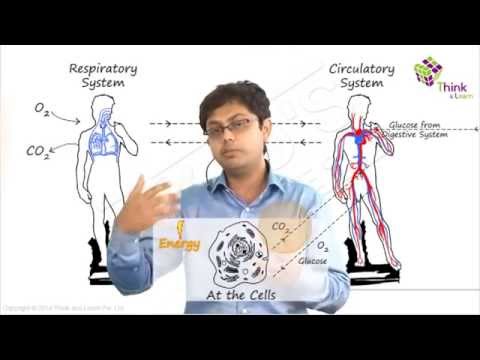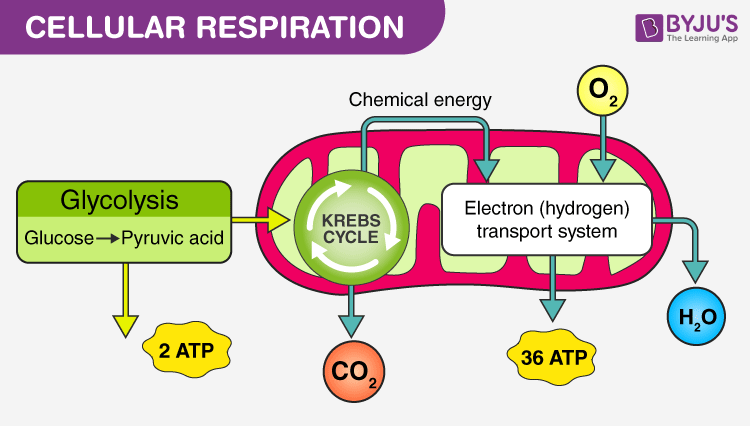
Respiration is one of the essential processes carried out by all living organisms to survive. When you run to catch your school bus, you find yourself to be breathing faster. It is because your body requires extra energy for running, which was provided by respiration. This resulted in rapid breathing. Breathing is an integral part of respiration but as a whole, it is a phenomenon that keeps our body going.
In simple terms, respiration is the process through which the nutrients we eat are converted into useful energy. As we know, the cell is the structural and functional unit of life and each cell requires energy to perform its functions. Therefore, respiration that takes place at the smallest level of our body i.e cellular level is called cellular respiration. The process ensures that each cell performs its function perfectly.
Let us have a detailed look at the cellular respiration that takes place in humans.

Cellular Respiration
Cellular respiration is a set of metabolic reactions occurring inside the cells to convert biochemical energy obtained from the food into a chemical compound called adenosine triphosphate (ATP). Metabolism refers to a set of chemical reactions carried out for maintaining the living state of the cells in an organism. These can be divided into two categories:
- Catabolism – the process of breaking molecules to obtain energy.
- Anabolism – the process of synthesizing all compounds required by the cells.
Therefore, respiration is a catabolic process, which breaks large molecules into smaller ones, releasing energy to fuel cellular activities.

Why Do We Respire?
Every living organism requires energy for its survival. Even when we are eating or sleeping, we need energy. Do you think you can run fast if you lack energy? Where does this energy come from? Yes, it comes from food and it is the process of respiration, that converts the food into energy.
While breathing, we breathe in air that contains oxygen and we breathe out air rich in carbon dioxide. As we breathe in, the oxygen-rich air is transported to all parts of our body and ultimately to each cell. Inside the cell, the food, present in the form of glucose, is broken down into carbon dioxide and water with the help of oxygen. The process of breakdown of glucose to release energy, which can be utilized by our body to perform daily chores like walking, sitting or even thinking, is known as respiration.
To know more about Cellular respiration, visit BYJU’S.
Frequently Asked Questions on Cellular respiration
What is respiration?
The process of breakdown of glucose to release energy, which can be utilized by our body to perform daily chores like walking, sitting or even thinking, is known as respiration.
What is metabolism?
Metabolism refers to a set of chemical reactions carried out for maintaining the living state of the cells in an organism. These can be divided into two categories:
Catabolism – the process of breaking molecules to obtain energy.
Anabolism – the process of synthesizing all compounds required by the cells.
What is ATP?
Adenosine triphosphate [ATP] is the energy currency of cells. It is produced during cellular respiration and utilized for the various endergonic process.

I want to study with buyjus